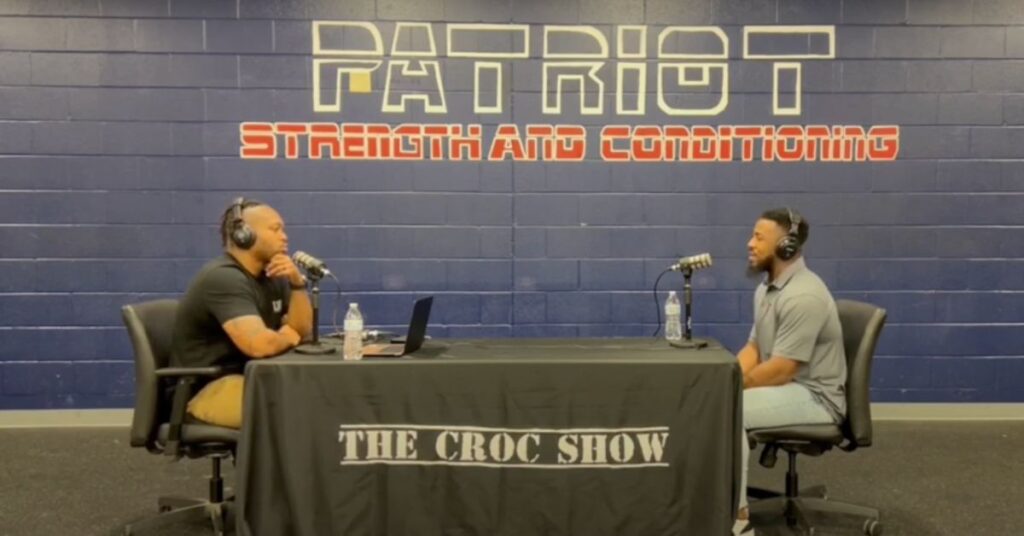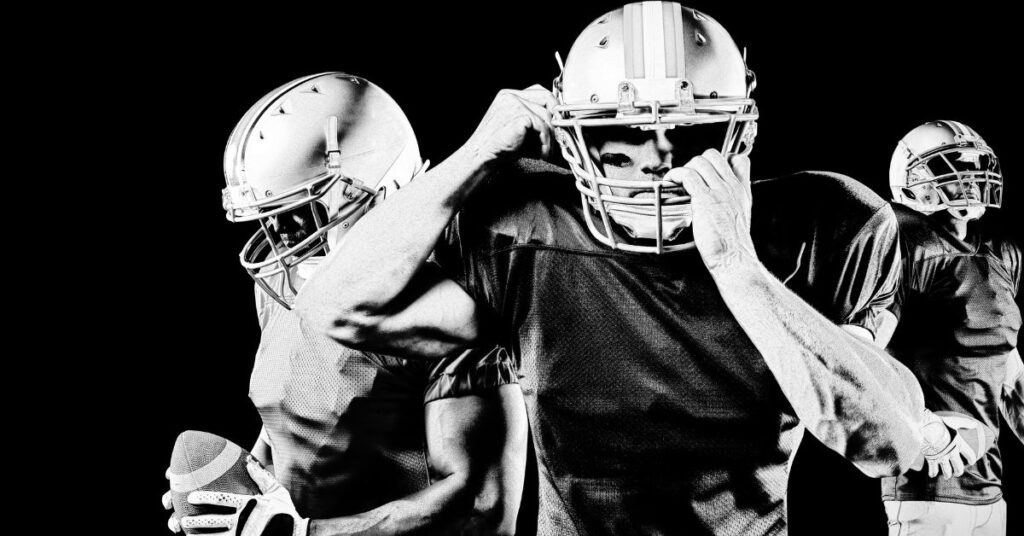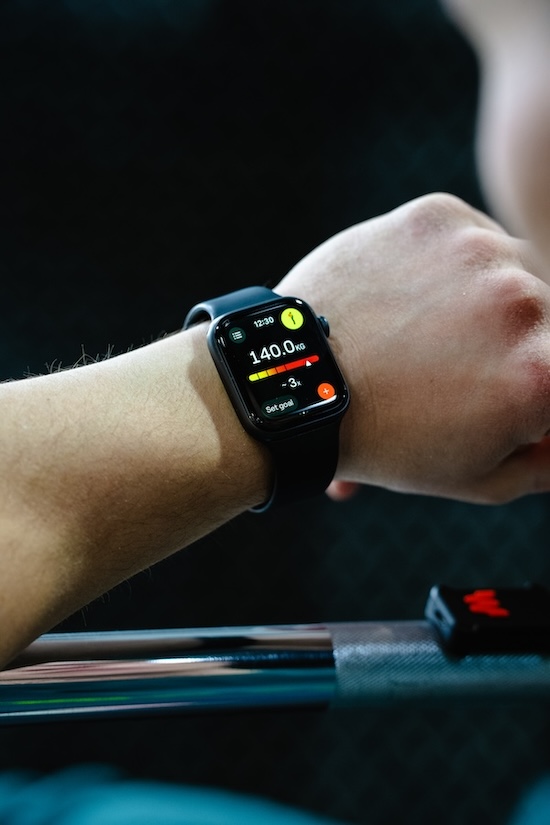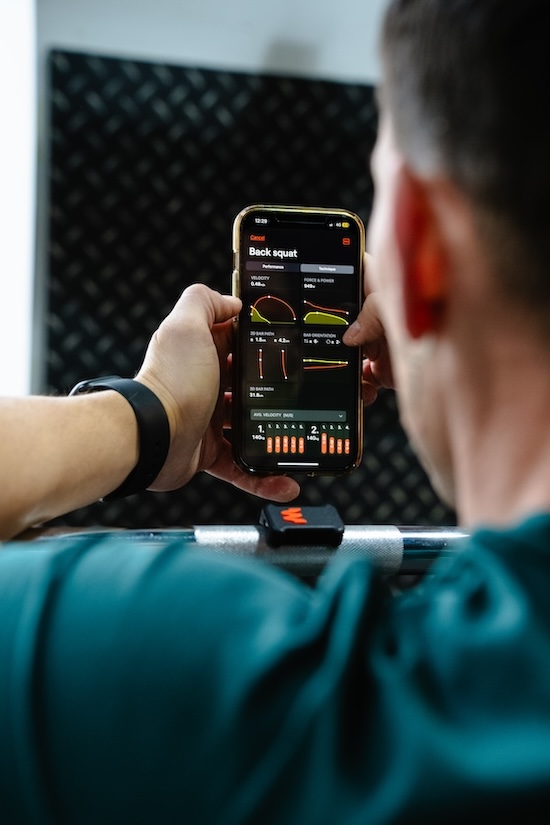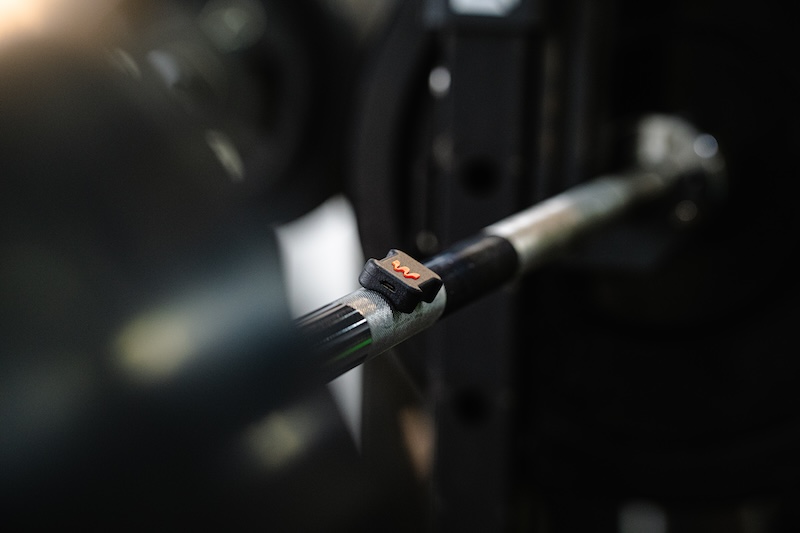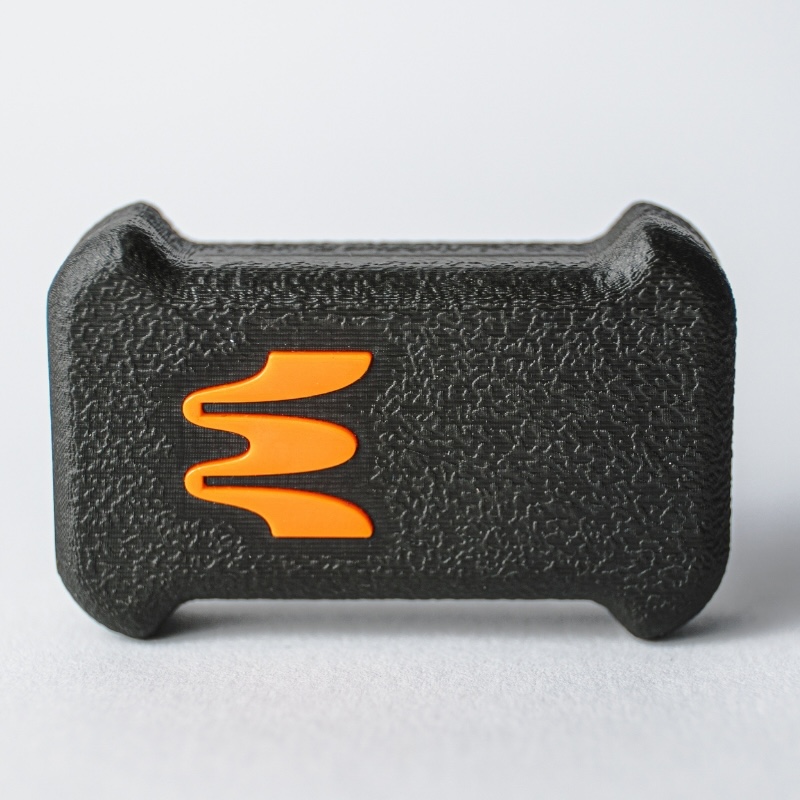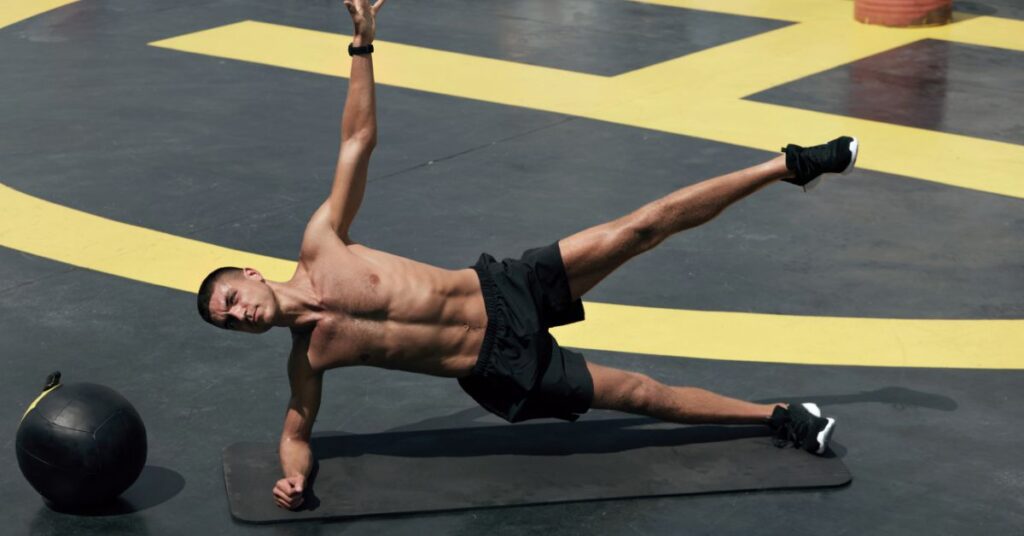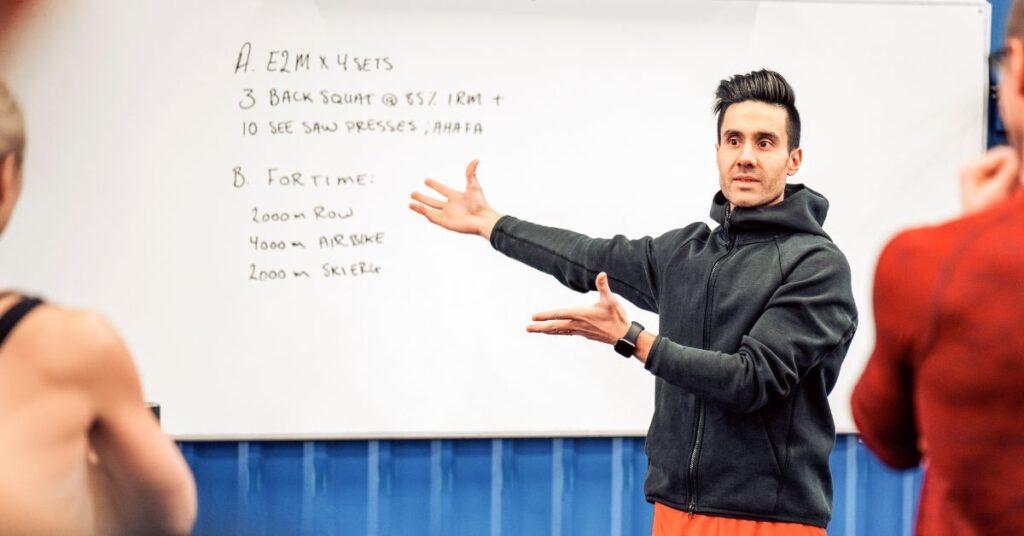
This article is probably not what you think it is—it will have little to do with business (something I know nothing about anyway), and more to do with enhancing your coaching skills. One of my goals over the previous summer was examining how to be a better salesman, so that I could do a better job of communicating to others in the program why we do what we do and get them more involved—these people primarily being athletes, coaches, therapists, and administrators.
You see, after 5 years of working as the head strength and conditioning coach in a university, I figured I had things pretty much figured out. Our teams were showing up, working hard, and getting great results. Then I noticed that whenever we brought in a new coach or new group of athletes (AKA “freshmen”), I had to gain that trust and sell myself all over again. Sure, developing a great team culture of “this is how we do things” helps, but in order to get everyone on board, I needed to step up my game because some people didn’t catch on right away or were used to a different style of training. They didn’t fully trust what we did in Sparta (our weight room), as it was unfamiliar to them.
So, I kept doing my best to enhance my art of coaching skillset by being myself, treating others with respect, explaining why we did things, and getting results. But this only went so far with the group of disbelievers—there were still those that were hesitant to fully commit to the program (athletes) or advocate for what we did in our weight room (coaches). It was then that I realized that I couldn’t just be satisfied with being a great coach and let the results speak for themselves—I needed to learn to sell what we did so that both coaches and athletes would be enticed to dive in deeper. Learning to sell would arm me with more persuasive tactics, better communication methods, and a deeper understanding of what the end user (i.e., the buyer) wanted so I could package my message accordingly.
I couldn’t just be satisfied with being a great coach and let the results speak for themselves—I needed to learn to sell what we did so that both coaches and athletes would be enticed to dive in deeper, says @chergott9. Share on XWhat follows is a summary of what I have been doing over the last year to enhance my impact across our teams by being better at selling what we do in Sparta. It encompasses what I have learned as well as what I plan to do better in this area of being a “salesman” in the collegiate S&C sector.
If you want to be better at selling your product (program, methods, etc.), you need to push a little further into just how you communicate with your stakeholders and persuade them that what you are doing is best for them and their athletes at this time. The eventual goal is that your athletes buy in and work hard, coaches trust you, therapists get along with you, and your admin lets you do your thing. Here are some strategies that I have found that help and will hopefully give you some guidance as well.
1. Show How Great You Are
One of the best ways to increase buy-in and have people be happy with the work you do is to be good at it. This means delivering results, being a nice person, and being someone that athletes enjoy training with and coaches enjoy talking to. No amount of “selling ability” will save you if you simply suck at your job.
One of the best ways to increase buy-in and have people be happy with the work you do is to be good at it, says @chergott94. Share on XOnce you have that aspect covered, it all comes down to demonstrating your ability. Now I am not talking about “nerding out” on your athletes with the science of training or walking around with your many certifications in a booklet to show your coaches. I would always prefer to remain humble and have my good work be passed along from athlete to athlete (or coach) through word of mouth. Nothing helps sell others like a good testimony. In fact, I started asking athletes for a quick 2 to 3 sentences on the impact our S&C department has had on them and posted them on our social media page to help with this very thing. If a respected athlete says you are doing a good job, it goes a long way in swaying others to buy in more.
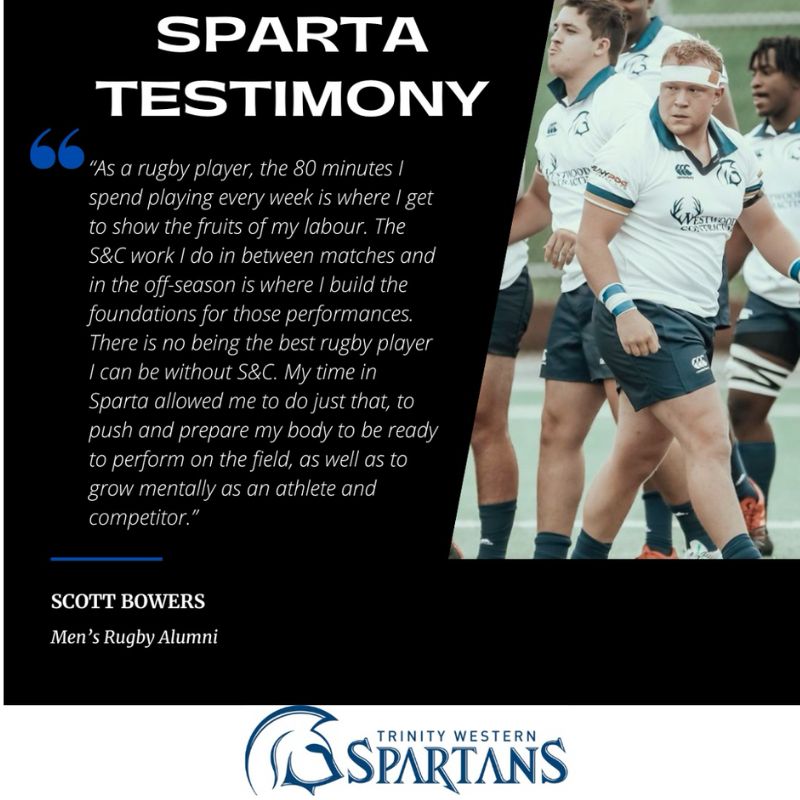
Another great way to demonstrate to others that you are crushing it is to show them when given the chance. Again, don’t walk around with your accolades in your hand, but when meeting with coaches about their team, have your testing data ready to share. That way, if they come at you with questions about your methods, you can show that it is working. Hard to argue with cold, hard facts. If an athlete starts to question or doubt, again, this can be a good time to mention that the process has worked for others and how, with your help, other athletes in the program were able to meet specific goals. This is not a time to beat your chest, go over the top, or be annoying (we all know that person)…but when given the opportunity, you need to be your biggest advocate and show people that you know your stuff and prove it!
2. Explain the “Why” of Your Program
If you want people to do what you need them to do, you need to know why you are doing it and be able to communicate that to each group in a different way so it speaks to their needs.
If you want people to do what you need them to do, you need to know why you are doing it, says @chergott94. Share on XFor example, you have your team do Olympic lifting. Great! Why? If it is because some Power 5 school is doing it, that isn’t going to cut it. You have to know the real why, so that you can communicate it effectively. As Michael Boyle puts it, you need to be able to know your stuff well enough to explain it to a 7-year-old or your grandmother. Yeah, you have to know it really well.
And that answer will change by group/team/individual. For example, each of the groups you interact with will be asking a different question about what you do and you need to have an answer for each:
- Athletes: “How will this help me get better (bigger/faster/stronger)?”
- Sport Coach: “How will this help us win games?”
- Therapist: “How will this help reduce injuries?”
- Admin: “How will this make us better and make an impact on the athletes?”
So… how will Olympic lifting accomplish each of those things?
My solution for this is to know the why that is right for them and learn to speak their language. When an athlete is asking why they are doing something, being able to explain it in a way that will demonstrate the performance gains (or even aesthetic ones) will go a long way.
With a sport coach, therapist, or admin, they might not get the chance to ask you “why” as often (as you simply don’t see them as much), but when they do it matters. I’ve been in meetings with sport coaches where they shredded my programs and demanded to know why we were doing certain exercises over others (for example, trap bar jumps instead of hang power cleans with hockey players). In order to understand their side and be able to clearly and effectively communicate the why, I had to ask more questions. “What do you like about doing hang cleans for your team?”
Turns out, they wanted power production and saw a video on pro athletes doing it.
So, I explained how trap bar jumps developed power in a more sport-specific (and force-time-specific) way than cleans, how it was safer for their wrists, would save time and energy for them to train harder on the ice (less time/mental energy to learn), and showed demos of pro athletes who were doing trap bar jumps. Conversation was much smoother after that.
So, while you knowing the “why” of your program is vital, it is even more vital that you can communicate that message to the various stakeholders so they can grasp it for themselves. Like learning to speak multiple languages, it will take time, but it will make you more versatile in how you communicate and who you can reach with your message.
So, while you knowing the 'why' of your program is vital, it is even more vital that you can communicate that message to the various stakeholders so they can grasp it for themselves, says @chergott94. Share on XHow is this done? Study the sport, have a reason in your head each time you program an exercise, and whenever you see an athlete perform that movement, remind yourself why (and feel free to remind the athletes why in a start-of-session briefing). Explaining your message is much easier if it is top of mind. Not rehearsed (this isn’t as difficult as you think it is). It is as simple as watching your athletes move as you normally do, but as they execute a movement and you are watching their form, just a quick note of “that split squat is going to help their sprint speed while reducing the load on their spin” to yourself is all you need to keep it top of mind and ready to fire off when asked.
3. Communicate on THEIR Terms
This is one I struggled with for a long time. I am a big email guy. I will shove emails down your throat all day, but please don’t call me (the introvert in me hates that). However, I have learned that I need to communicate with my audience the way they are most receptive to, not just the way I want to, if I want to communicate my message and make sure the stakeholders are receiving it.
What I mean by that is everyone has a method of communication they prefer. Once again, I love email. Most athletes prefer text or social media DMs. Male ice hockey players love phone calls for some reason. Regardless of what it is, you need to communicate to them when able and appropriate. I am not saying you should send DMs to athletes all the time about important info. But knowing someone’s preferred communication method can help them respond to you in a timely fashion (and/or even receive the message in the first place).
Knowing someone’s preferred communication method can help them respond to you in a timely fashion (and/or even receive the message in the first place), says @chergott94. Share on XThis means I text or call our coaches, post on Instagram more often, and send messages into the team group chat through our weight room leaders. I’d still rather send an email—most often I still do, and the message to the team is simply “Hey, can you tell your teammates to check their email?” This has greatly increased the receptivity of my communication and reduced the amount of “Oh, I didn’t see that email” coupled with a blank stare when I bring up a topic/point I made before.
It also depends on what your message is and what medium works best. For example, I have a sponsorship through a supplement company to get a discount on their products. If I want to communicate info regarding that deal and give out my discount code, it would make sense to send it via email as most people probably order things online through their laptop instead of their phone (I mean, at least I do anyway). If I have a message I need to communicate on a Saturday, guess what? I’m not using email as everyone goes dark until Monday. So, if that is the case, I send a text or a message in the team chat to make sure everyone sees it.
Knowing the recipient’s communication preference is important, but so is understanding the logistics of your message and the implications of acting on it as well.
Sales Bonuses
Some extra ways I have found to increase my “selling ability” to athletes and within the department are:
- Be a good storyteller. Analogies are huge for me to get my message across in a way that makes sense instead of just spitting science at people all the time.
- Highlight successes. As Dale Carnegie states, “Be lavish in your praise.” If you want people to go the extra mile for you, highlight them when they do. This can be in a weekly email newsletter or social media post. By letting people know you “see them” and appreciate them, it will increase buy-in all around.
- Be adaptable. Whether it is for an injury, wanting a recovery session due to a tryout camp coming up, or an athlete who wants to spend a little more time working on their sprint form, being willing and able to modify the program to suit the needs of that person goes a long way in showing you care and demonstrating that you will work for them if they work for you.
One last helpful tip I can share is that last summer I reread How to Win Friends and Influence People by Dale Carnegie, which that has loads of tips for this exact topic and is a must-read for anyone working with other people.
Peace. Gains.
Since you’re here…
…we have a small favor to ask. More people are reading SimpliFaster than ever, and each week we bring you compelling content from coaches, sport scientists, and physiotherapists who are devoted to building better athletes. Please take a moment to share the articles on social media, engage the authors with questions and comments below, and link to articles when appropriate if you have a blog or participate on forums of related topics. — SF






